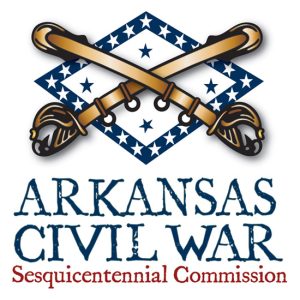calsfoundation@cals.org
Allison Nelson (1822–1862)
Allison Nelson was the mayor of Atlanta, Georgia; a state legislator; and a brigadier general in the Confederate army. He died while serving in Arkansas and is buried in the state.
Allison Nelson was born on March 11, 1822, in Fulton County, Georgia, the son of John Nelson; his mother’s name is unrecorded. His father was a ferry operator on the Chattahoochee River and was murdered in 1825. Nelson married Mary Sledge Greene in 1840, and the couple would eventually have two daughters and a son.
During the Mexican War, Nelson raised a company of volunteers from Georgia and was elected as captain of the unit, known as the Kennesaw Rangers. The Georgians never saw any action during the war, however. Nelson returned to civilian life at the conclusion of hostilities and trained as a lawyer. In 1848, he entered politics when he was elected to the Georgia state legislature, where he served a single term. Returning to military service, Nelson joined a scheme to seize Cuba from Spanish forces. Offered a brigadier generalship under the command of Narcisco Lopez in 1851, Nelson never took part in the invasion.
Returning to the political scene, Nelson—a Democrat—was elected mayor of Atlanta in 1855. Serving for only six months, he resigned in July 1855 in response to the city council reducing a fine that he had levied on two men convicted of destruction of public property, profanity, and fighting in the streets. He moved to Kansas, where he became involved with pro-slavery forces, and then he moved to Texas. Settling in Bosque County, he worked as an Indian agent for four years and was elected to the state legislature in 1859.
During the Secession Convention of 1861, Nelson represented his new county and voted for the state to leave the Union. With the outbreak of war, Nelson reentered military service and raised the Tenth Texas Infantry. Nelson became the colonel in command of the regiment. Organized in Waco, the unit entered Arkansas in the summer of 1862 and came under the command of Major General Thomas C. Hindman. Desperate to hold on to any troops in the state after the abandonment of Arkansas by Major General Earl Van Dorn, Hindman ordered the regiment to assist in the defense of towns on the White River.
The Texans moved toward St. Charles (Arkansas County) but were delayed in DeValls Bluff (Prairie County) due to a lack of ammunition. Eventually, the Texans moved down the river, only to learn that a Federal flotilla had captured St. Charles. The Confederates returned to DeValls Bluff and prepared defensive positions. Nelson was given the command of a brigade of troops and worked feverishly to build earthworks. Due to falling water levels, the Union ships were unable to reach DeValls Bluff. However, after the Confederate defeat at the Action at Hill’s Plantation, Hindman determined that DeValls Bluff should be abandoned.
After all of the heavy guns and other materials were taken from the town, Nelson led his brigade along the railroad track linking DeValls Bluff with what is now North Little Rock (Pulaski County). In a defensive maneuver, the Confederates destroyed much to the track until they reached Bayou Meto. The Texas troops dug in at that position.
The Texans moved to the Crystal Hill (Pulaski County) area in August, where Nelson uncovered a plot by Arkansas troops to desert. About sixty men did successfully leave their regiments, but further desertions were prevented by increased discipline, including a number of executions.
In recognition of his valuable service, Nelson was promoted to the rank of brigadier general on September 12, 1862, and was placed in command of a division of Texas troops. He moved with his men to Camp Hope near Austin (Lonoke County).
This camp was selected as a location more free from disease than the previous site near Crystal Hill, but nevertheless, Nelson fell ill with typhoid on September 27, dying on October 7. He is buried in Mount Holly Cemetery in Little Rock (Pulaski County). The Confederate camp near Austin was named in his honor and is now a Confederate cemetery holding the remains of approximately 1,500 soldiers who lost their lives to disease.
For additional information:
Bearss, Edwin. “The White River Expedition June 10–July 15, 1862.” Arkansas Historical Quarterly 21 (Winter 1962): 305–362.
Polston, Mike. “Allison Nelson: Atlanta Mayor, Texas Hero, Confederate General.” Atlanta Historical Journal 29 (Fall 1985): 19–25.
Warner, Ezra J. Generals in Gray: Lives of the Confederate Commanders. Baton Rouge: Louisiana State University Press, 1987.
David Sesser
Henderson State University
 Civil War through Reconstruction, 1861 through 1874
Civil War through Reconstruction, 1861 through 1874 Military
Military ACWSC Logo
ACWSC Logo  Allison Nelson
Allison Nelson 



Comments
No comments on this entry yet.